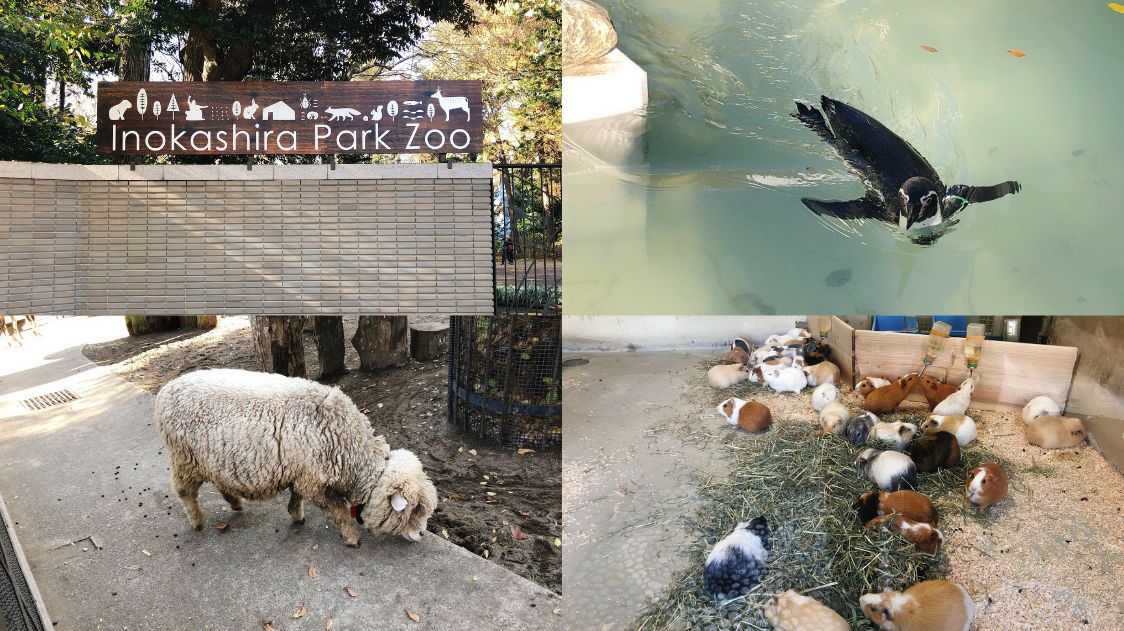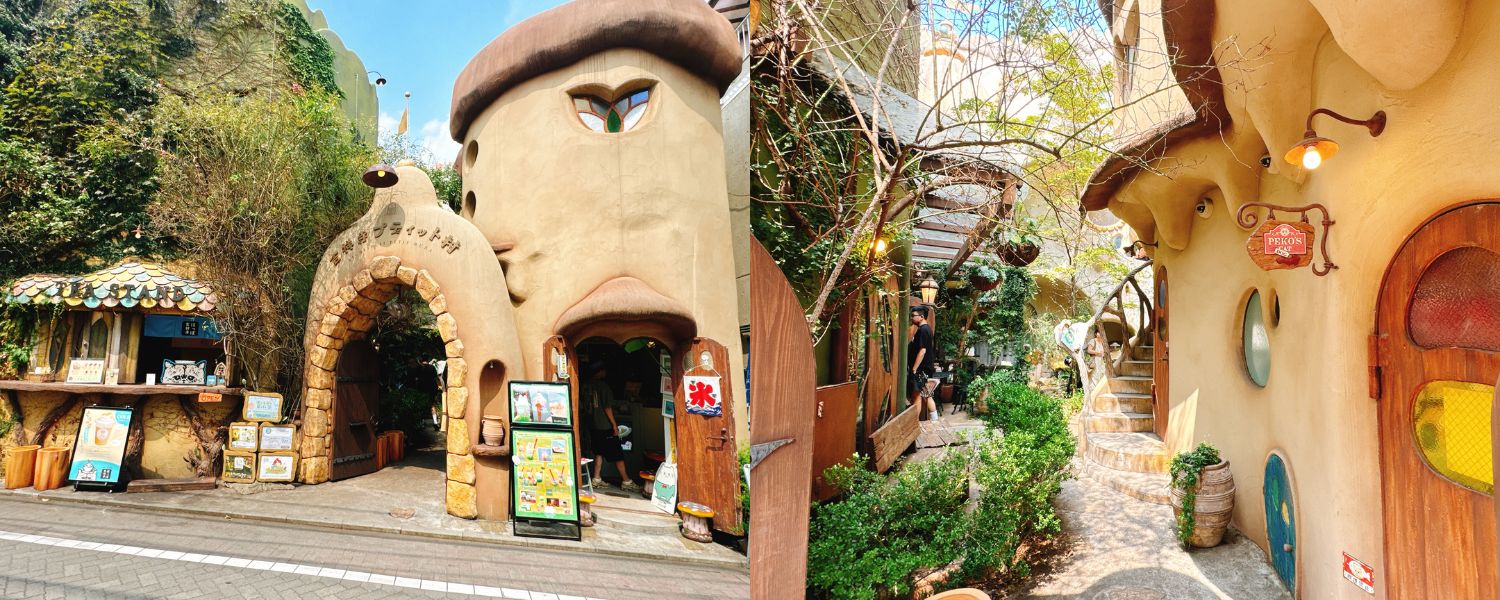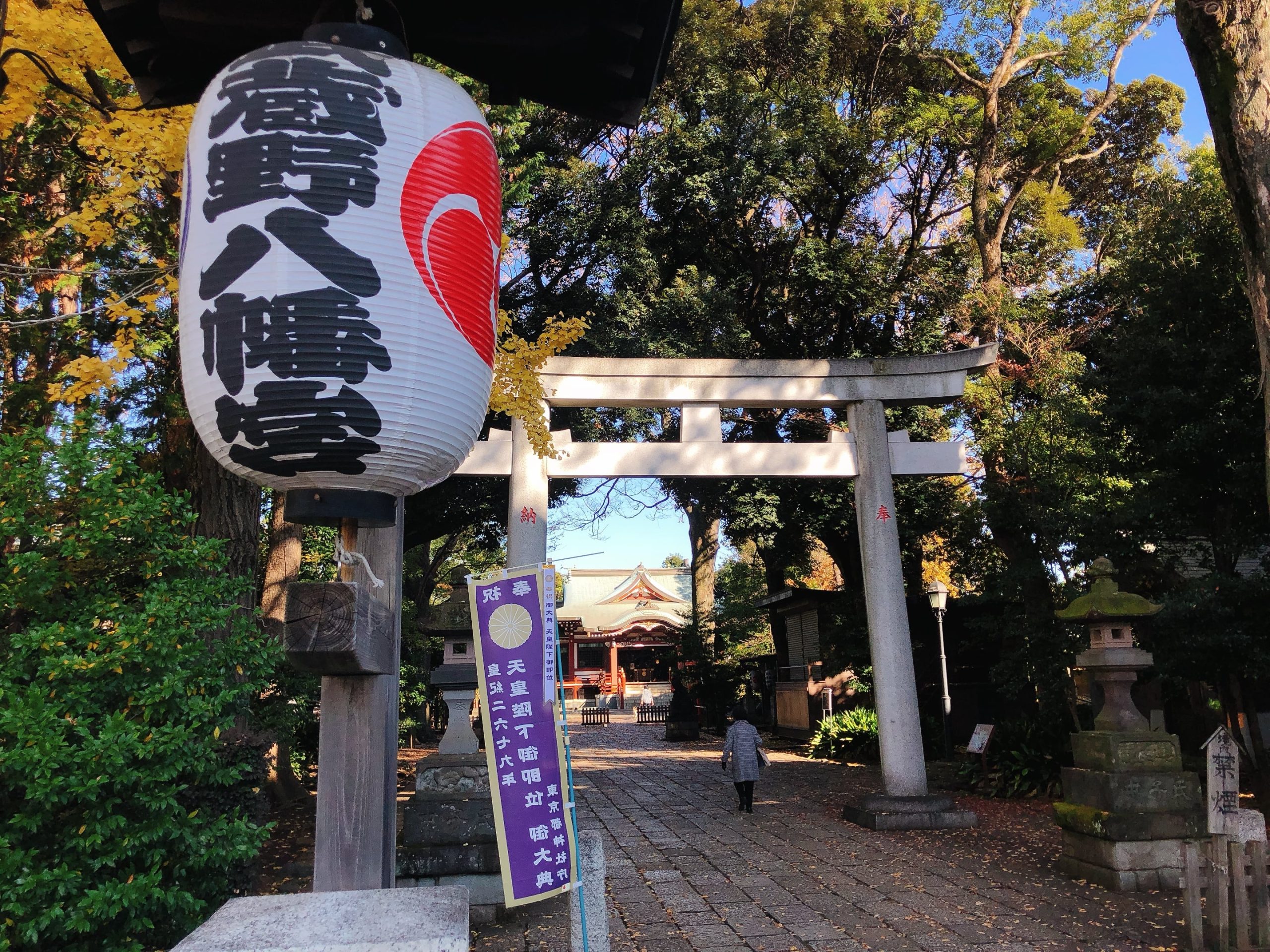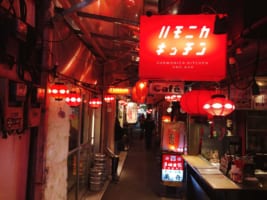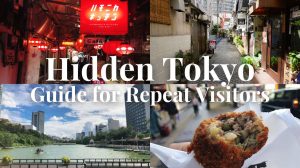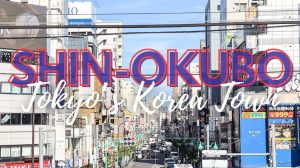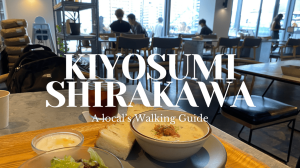The Perfect Day in Kichijoji: A Local’s Walking Guide (2025)
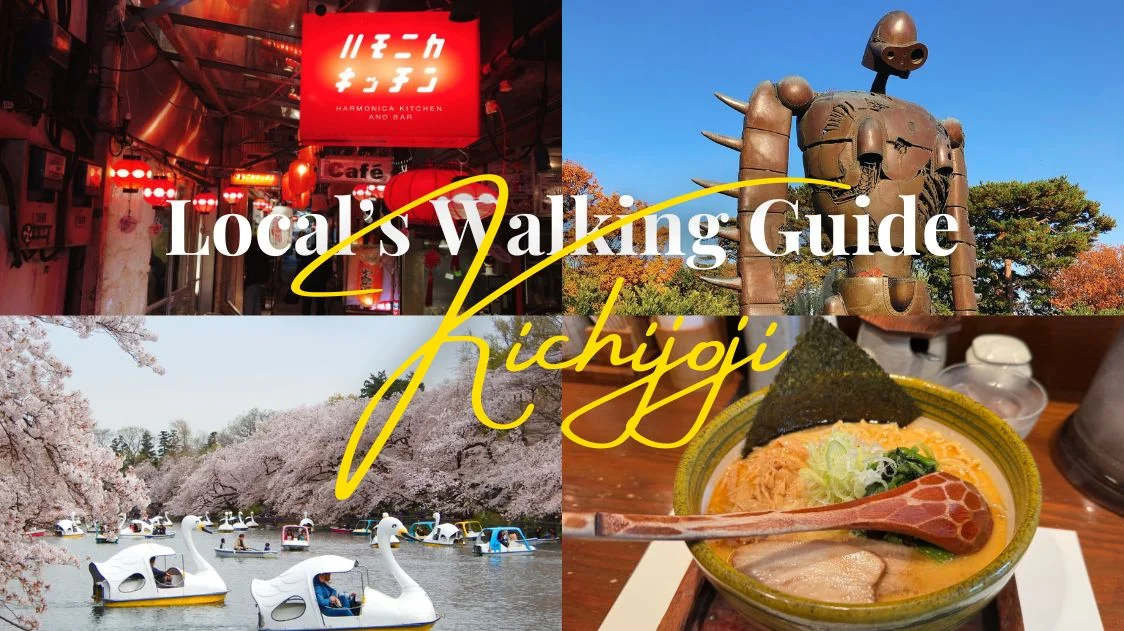
Kichijoji… For people living in Tokyo, it is a neighborhood admired for its balance of rich nature and everyday convenience. But what about travelers?
It is certainly a place worth visiting at least once, and for those traveling to Tokyo for the second or third time, Kichijoji offers a deeper exploration of the city beyond the well-known tourist areas.
This guide introduces the charm of one of Tokyo’s most beloved neighborhoods where nature, culture, and local food coexist.
With nearly ten years of living experience in Tokyo, I often visit Kichijoji to enjoy its greenery, food, and shopping. Based on these experiences, I would like to share the best one-day plan to fully enjoy Kichijoji, including access details and insider local tips.
This Kichijoji guide is recommended for those who:
– Feel tired of Tokyo’s usual popular spots
– Want to explore places away from the crowds
– Prefer a relaxed trip while experiencing Tokyo’s local atmosphere
– Wish to discover Kichijoji beyond the Ghibli Museum and Inokashira Park
Why Should You Visit Kichijoji?
There are many reasons to recommend Kichijoji to visitors in Tokyo, but above all, it is a place where you can travel like a local. Frequently ranked as the number one neighborhood where people most want to live, Kichijoji offers an authentic taste of Tokyo as if you were a resident.
Unlike major areas such as Shinjuku or Asakusa, it is not overflowing with tourists. At the same time, you can enjoy truly Japanese dining experiences, lush greenery, and a wide variety of shopping options.
Including the spots introduced in this guide, most of the must-see places are compactly centered around Kichijoji Station, allowing you to enjoy many experiences in a single day and make the most of your time.
One of Kichijoji’s greatest appeals is that, despite offering a stress-free atmosphere away from crowds, it still boasts a prime Tokyo location. Just 15 minutes by train from Shinjuku, one of the city’s main transportation hubs, it combines excellent access with the local charm that sets it apart from the more crowded tourist hotspots.
How to Get to Kichijoji
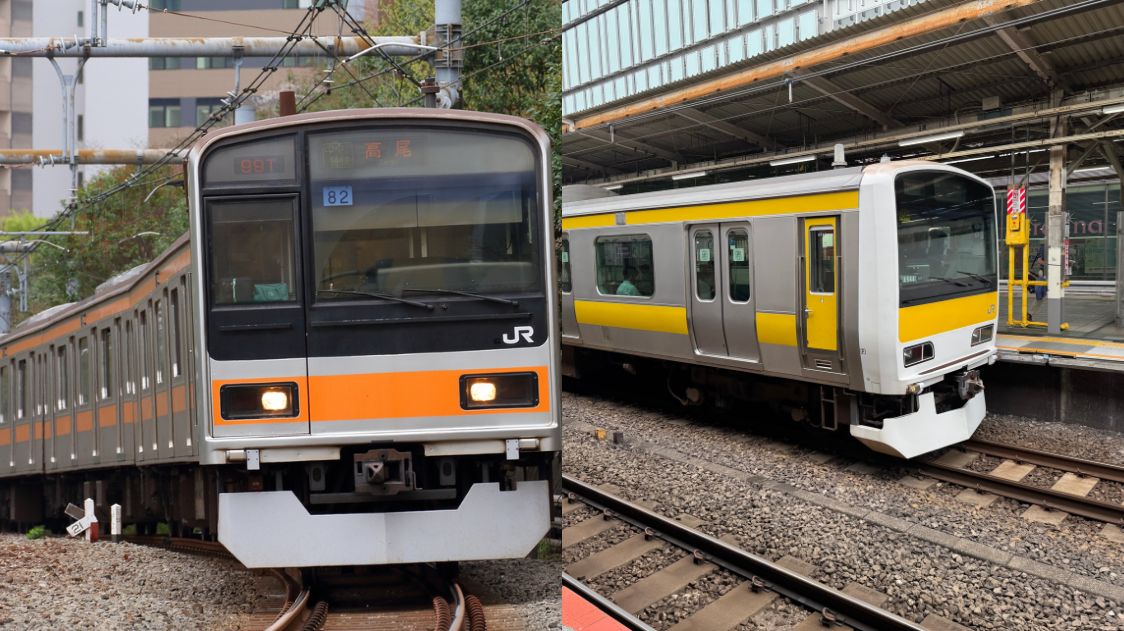
Getting to Kichijoji is straightforward, especially from central Tokyo. The most convenient route is from Shinjuku Station on the JR Chuo Line.
Look for the bright orange Rapid Train (快速 – Kaisoku), which will take you to Kichijoji in about 15 minutes with only a few stops. The yellow Local train also goes to Kichijoji, but it stops at every station and takes just 4-5 minutes longer. While the Rapid train is the preferred choice, the Local train will still get you there with almost no real difference, so there’s no need to worry too much.
A Perfect 1-Day Itinerary in Kichijoji – With or Without the Ghibli Museum
This plan includes not only Kichijoji’s must-visit attractions but also hidden local tips I’ve discovered through countless walks around the neighborhood.
The suggested model itinerary runs from 9 AM to 8 PM, but even if you skip a few stops along the way, I’m confident it will still make for a rewarding and memorable visit. Feel free to adjust the schedule to match your own pace and preferences.
[9:00–10:00 AM] Start at Kichijoji Station
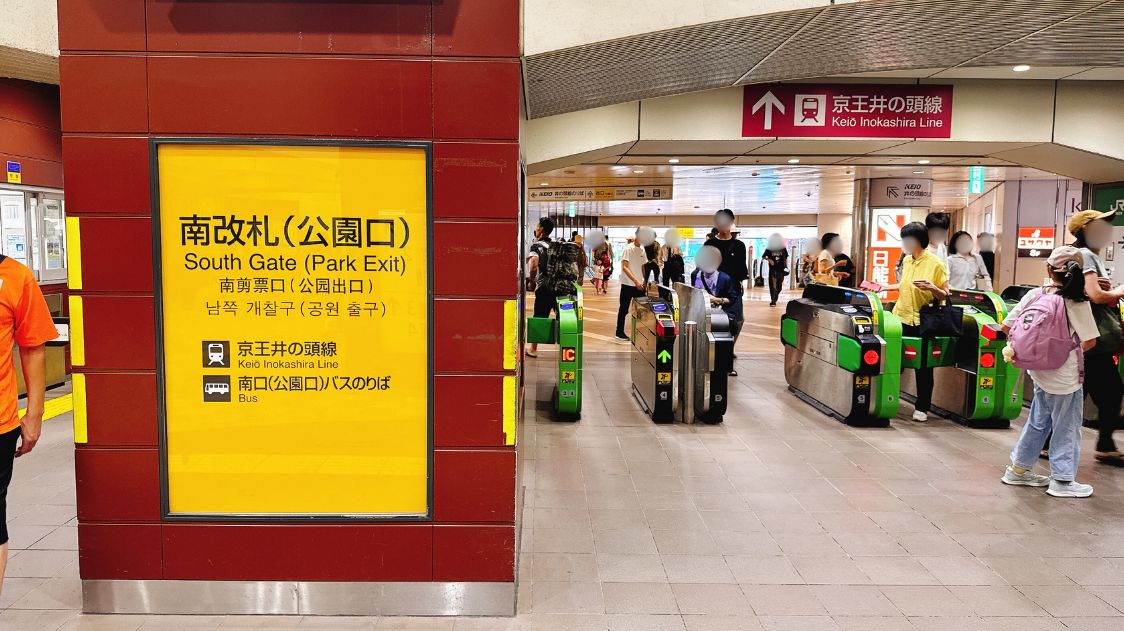
As mentioned earlier, it only takes 15 minutes from Shinjuku, and in fact, you can reach Kichijoji from almost anywhere in Tokyo within an hour. Once you arrive at Kichijoji Station, your local-style Tokyo journey begins! If you are coming by JR lines, go through the “Central Gate” and then head out from the “Park Exit.”
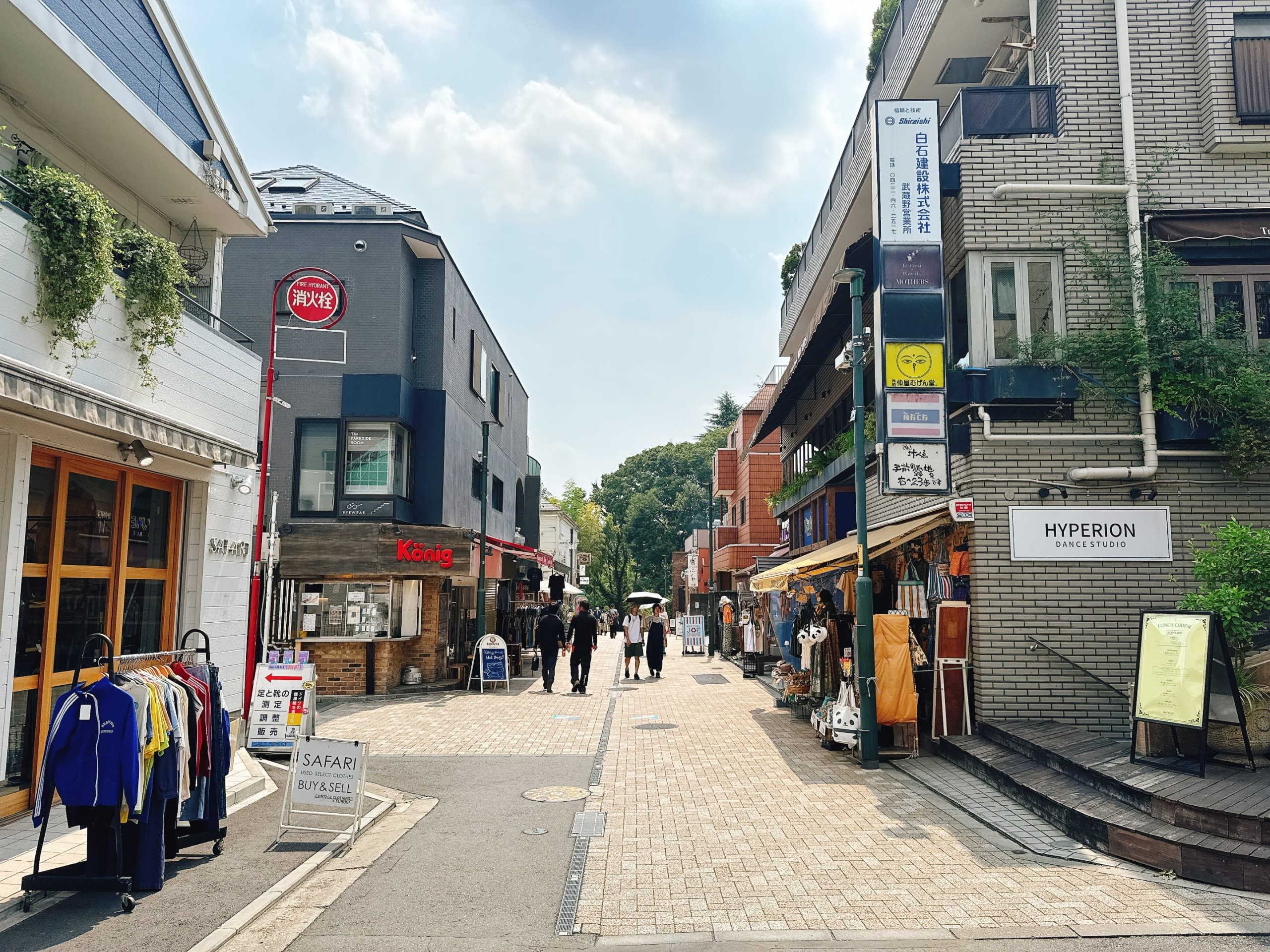
Your first destination is Inokashira Park, the true heart of Kichijoji. It’s just a 5–10 minute walk from the station, and along the way you’ll find plenty of interesting snack shops and clothing stores. Some cafes open as early as 8 AM, but since this itinerary suggests starting at 9 AM, a few shops may still be closed. Of course, making spontaneous stops wherever something catches your eye is part of the fun.
For an early-morning option, how about:
Sarutahiko Coffee Kichijoji Inokashira Koen Mae Store: https://maps.app.goo.gl/yJxbfGWqFBj2CuhU8
Sunday Vegan (Donuts): https://maps.app.goo.gl/wzdwqSKeRGW9dat36
[10:00–11:00 AM] Refresh in Nature at Inokashira Park
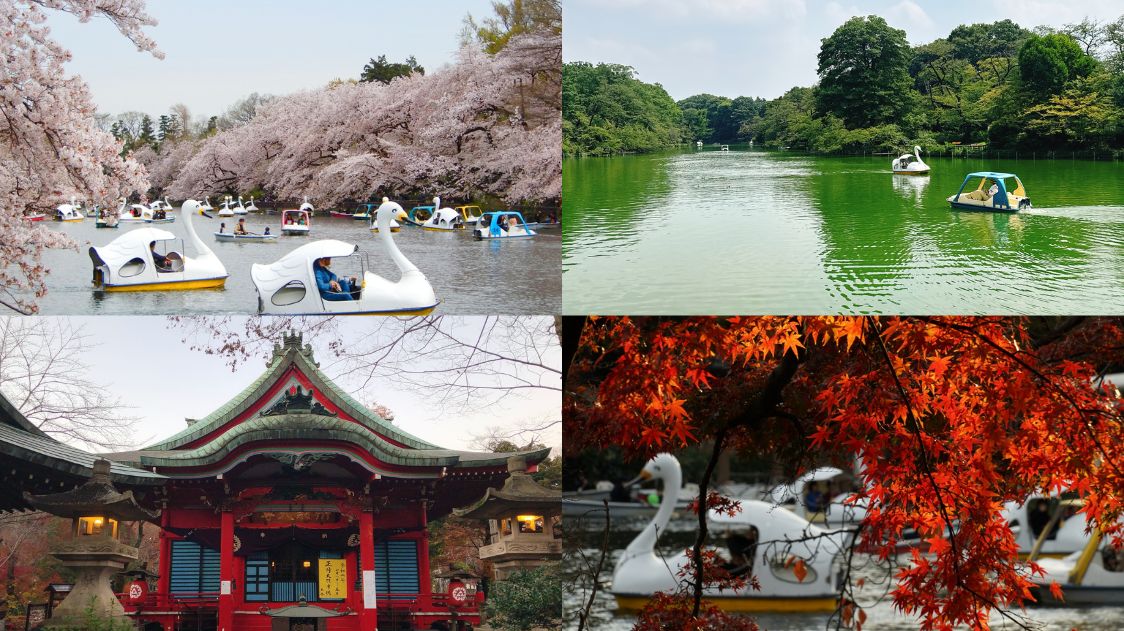
One of Tokyo’s most famous parks, Inokashira Park feels far removed from the city’s usual crowds. It’s not completely empty, of course, but it offers plenty of space and greenery to enjoy at your own pace. Simply strolling through the lush surroundings is a perfect way to refresh yourself.
At the center of the park is a large pond, where swan boats are a popular and easy activity, especially for couples and families. Boat rentals cost 800 yen for 30 minutes, starting at 10:00 AM from April to September and from 9:30 AM during the rest of the year.
If you’d like a specific destination within the park, head toward Inokashira Benzaiten (Daiseiji Temple), located at the edge of the pond. The striking red bridge and main hall, surrounded by greenery and water, make for a memorable scene.
After such an early start, you might be getting a little hungry by now. Let’s head to lunch.
[11:30 AM–12:30 PM] Enjoy Outstanding Ramen for Lunch near Inokashira Park
Have you already tried ramen in Tokyo? Whether it’s your first bowl or not, I highly recommend tasting my favorite ramen here in Kichijoji. This time, I’ll introduce two excellent ramen shops located near the park, although there are also widely recognized chains such as Ichiran and Ippudo in Kichijoji.
You’ll head back toward the station, and along the way you’ll find these spots. The best strategy is to arrive a few minutes before they open at 11:30 AM. After that, lines begin to form and you may end up waiting for quite a while. Even if you miss the very first seating, the short wait is well worth it.
To be honest, both ramen places are fantastic. I’ve eaten countless bowls of ramen not only across Tokyo but all over Japan during my travels, and these shops truly stand out. They also hold high ratings on Tabelog, Japan’s most trusted restaurant review site. Personally, I believe that when a ramen shop’s Tabelog rating exceeds 3.5, it shows that a large number of people trust the quality of the food, and it’s definitely something to look forward to. Both of these shops are above that mark, and I fully agree with those ratings.
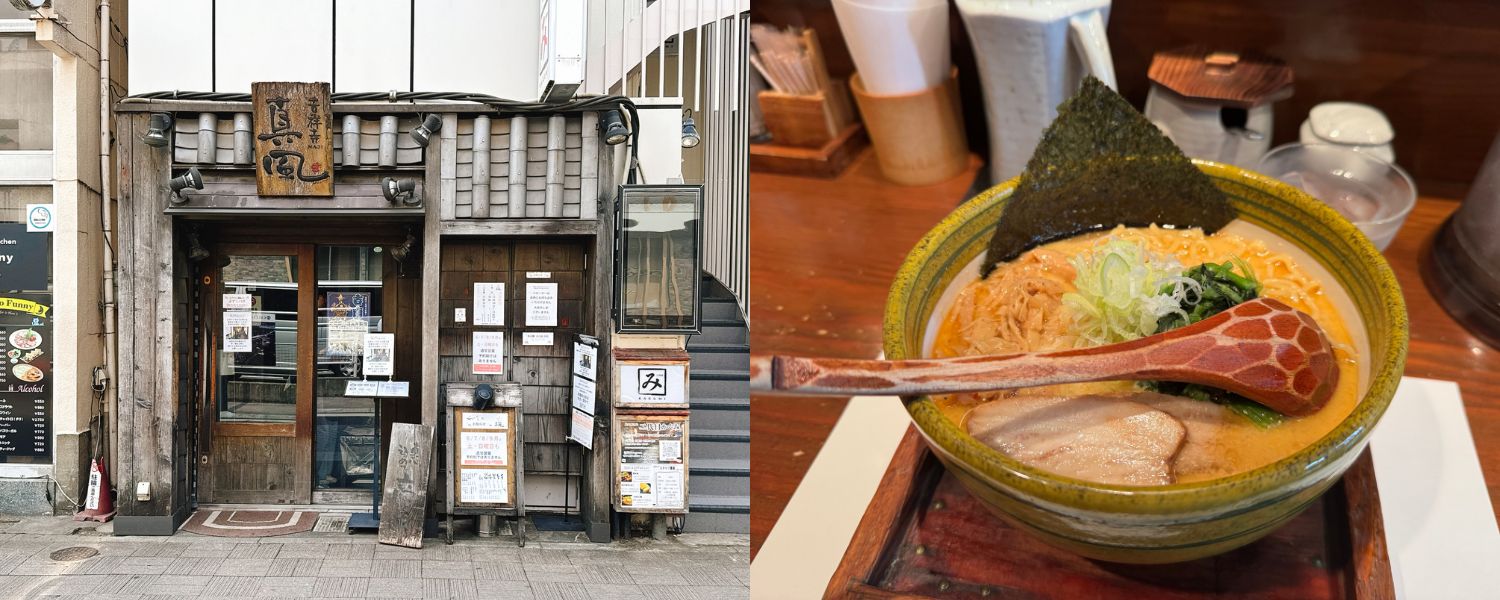
Lunch Option 1: Maji (真風)
The first recommendation is Kichijoji Maji, known for its unique and refined Shio Tai Ramen (sea bream salt ramen), a rare style even in Tokyo. While the shop also serves miso and tonkotsu ramen, I strongly suggest trying the original Shio Tai Ramen, which is truly the specialty here. The broth is light yet delivers a powerful aroma of sea bream, and the curly noodles pair beautifully with the soup. It’s an irresistible combination.
Recommended Dish: Shio Tai Ramen (Look for the menu button labeled ‘塩鯛’)
Tabelog Rating: 3.56 (As of September, 2025)
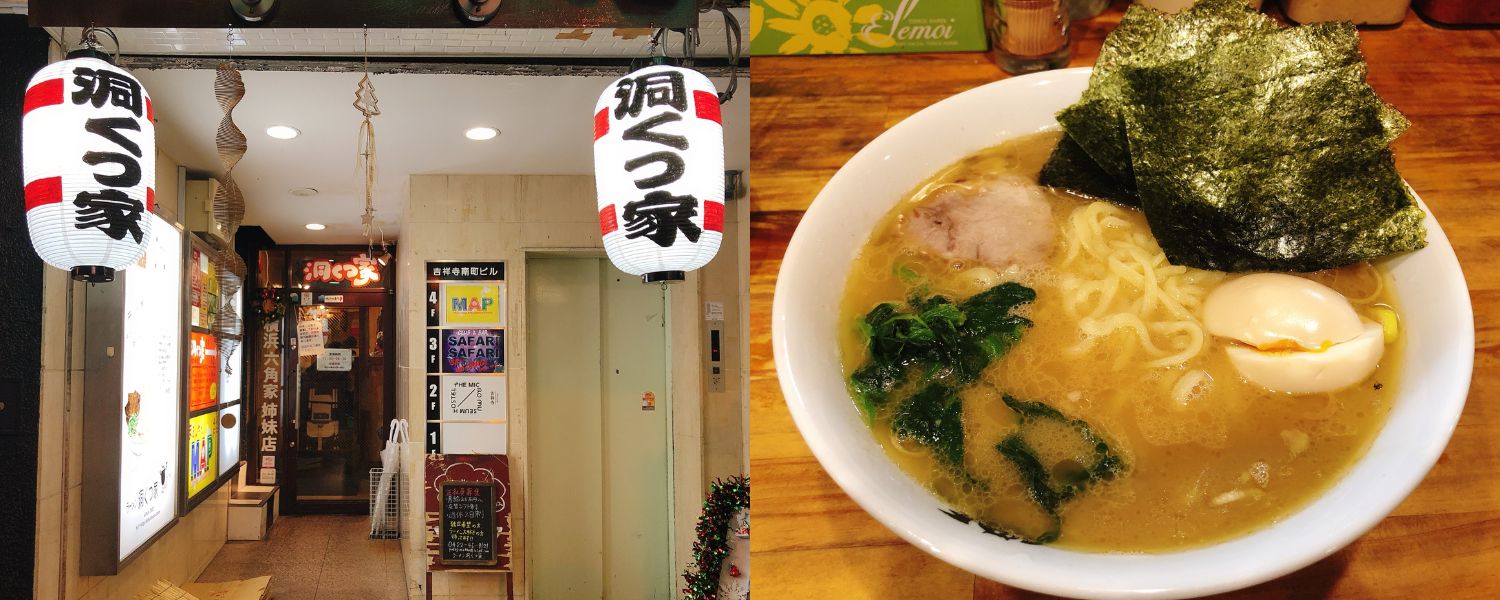
Lunch Option 2: Dokutsuya (洞くつ家)
The other ramen shop is Dokutsuya, specializing in Iekei ramen — currently one of the most popular ramen styles in Japan. Iekei features a rich, heavy broth made from pork and chicken bones, with toppings such as chashu pork, nori seaweed, and spinach.
One important tip: don’t forget to order rice on the side. Dokutsuya’s ramen pairs perfectly with rice, and dipping the nori into the broth and then eating it together with the rice is simply outstanding.
Recommended Dishes: Ramen, Rice (Look for the menu button labeled ‘ラーメン’ and ‘ごはん’)
Tabelog Rating: 3.69 (As of September, 2025)
Ramen Tips
– At both ramen shops, you can enjoy an excellent bowl for around 1,000 yen. As with many ramen restaurants in Japan, the first step after entering is to buy a meal ticket from the vending machine. Payment is made directly at the machine, so be prepared to use cash, especially 1,000 yen bills and 100 or 500 yen coins.
– English menus may not be available yet, and that also means these spots are still mainly known to locals, giving you the chance for a more authentic experience. That is why I have listed the Japanese names of the recommended dishes above; simply look for those buttons on the machine.
– When you finish your meal, saying “Gochisosama-deshita” (ごちそうさまでした) to the staff will surely make them smile.
[1:00–3:00 PM] Ghibli Museum / Shopping
After lunch, it’s time to continue your Kichijoji exploration. The highlight of the afternoon will depend on your choice: the world-famous Ghibli Museum or a variety of unique shopping experiences.
If you’re interested in the Ghibli Museum and managed to secure a reservation, this is the perfect time to enjoy it. On the other hand, if you’re not particularly into Ghibli or weren’t able to get tickets, don’t worry. There are still plenty of exciting things to do in Kichijoji. As an alternative, I’ll introduce some distinctive Tokyo-style shopping options.
For Those Heading to the Ghibli Museum
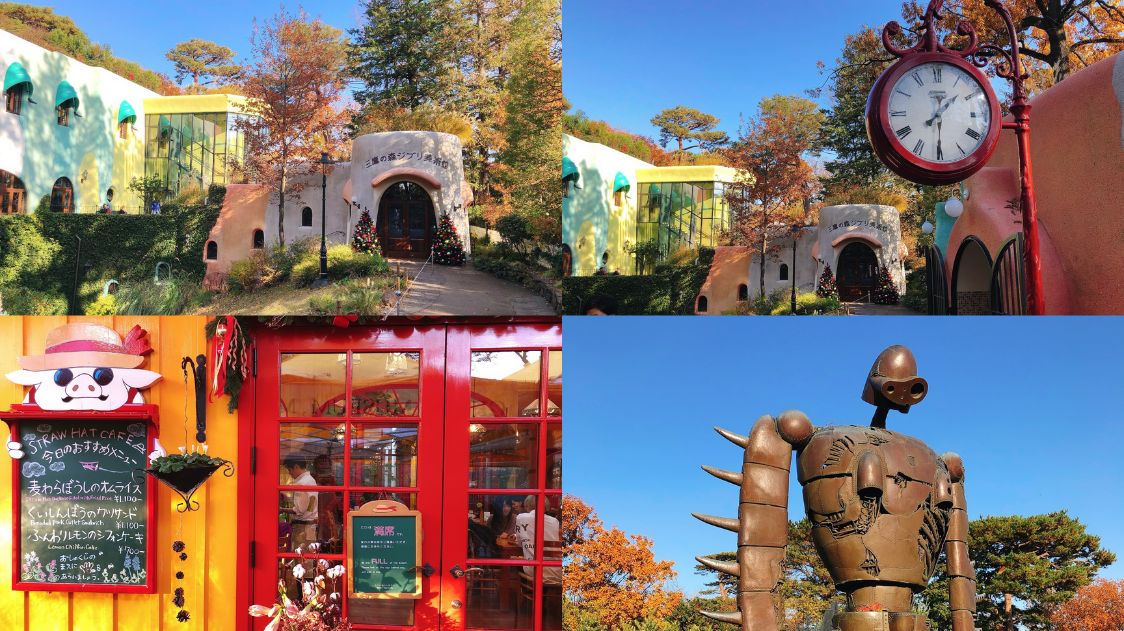
A reservation is required for the museum, and you’ll also need to select an entry time when booking. If you’re following this itinerary and still planning your reservation, I recommend choosing the 1:00 PM slot. If the museum is your top priority, it’s best to build the rest of your trip around it and simply add whichever parts of this itinerary interest you most.
From Kichijoji Station or the ramen shops mentioned earlier, it’s about a 15–20 minute walk to the museum. The official guide of the Ghibli Museum suggests walking from JR Mitaka Station’s South Exit along the Tamagawa Josui canal, which takes around 15 minutes at a leisurely pace. This route is also marked with cute signposts along the way, making the walk enjoyable. If you have some extra time, taking the train to Mitaka Station and approaching the museum from there is highly recommended.
Official Ghibli Museum Access Information: https://www.ghibli-museum.jp/en/hours-and-directions/
There is no strict time limit on how long you can stay in the museum, and depending on your interest, you could spend several hours. I’m a big fan of Ghibli films myself, and even when taking full advantage of everything, I spent around two to three hours inside (including a short movie, exhibitions, a souvenir shop and a cafe).
I won’t go into too much detail here, so you can discover the exhibits for yourself. If you’d like more practical tips or a detailed review, take a look at my dedicated article about the Ghibli Museum: https://jw-webmagazine.com/tips/ghibli-museum-tokyo/
For Those Not Visiting the Ghibli Museum: Go Shopping
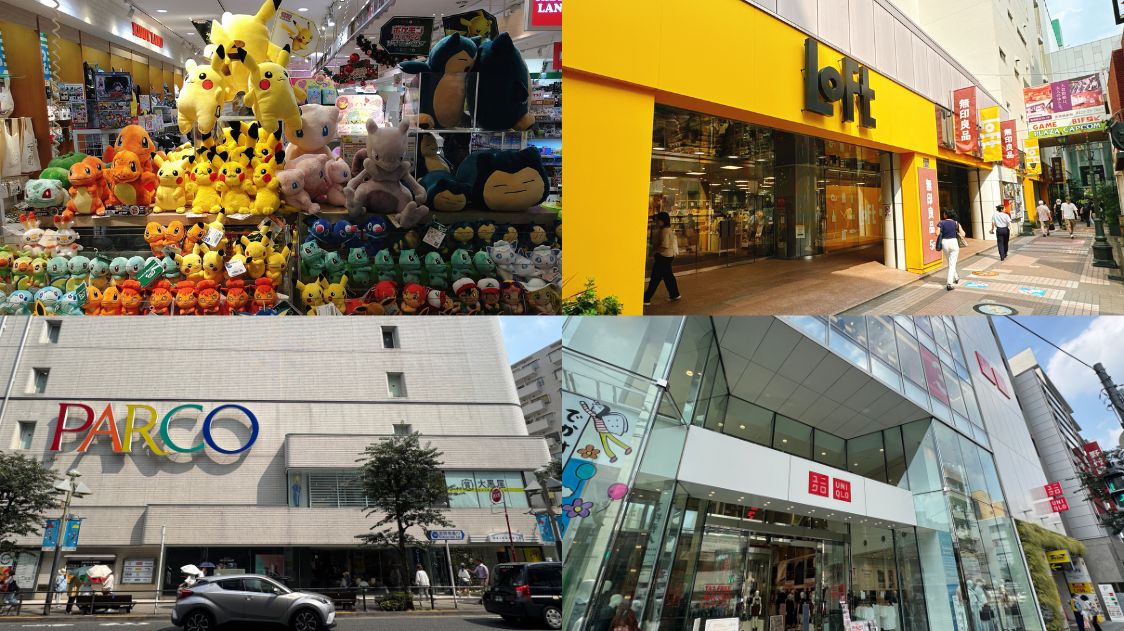
Kichijoji offers an impressive variety of shopping options, from large department stores and Japan’s very first fashion retailers to small, one-of-a-kind specialty shops.
Head to the north side of the station, the opposite direction from Inokashira Park and the ramen shops from earlier. Just a short walk away you’ll see Loft, marked by its bright yellow sign. Loft is one of Japan’s most famous variety stores, selling everything from cutting-edge stationery to practical everyday goods. On the 5th floor, you’ll also find Muji, which is popular worldwide. A tax-free counter is available as well.
Right next to Loft stands the Coppice Kichijoji shopping mall. This is another uniquely Japanese shopping complex, mainly focused on fashion. You can browse the latest Japanese trends, or if you’re visiting with kids, the 6th floor features Character Park Kichijoji, which is perfect for families.
To experience the forefront of Japanese youth culture, head to Kichijoji Parco. While many of its shops target women, there are plenty of stores that men can enjoy as well. The building also includes cafes and the popular anime retail chain Animate.
Other options include the stylish Tokyu Department Store and Yodobashi Kichijoji, a great choice for anyone interested in electronics. Truly, you won’t run out of shopping destinations here.
The best part is that all of these shopping spots are located close together on the north side of the station, so getting around is quick and easy.
Finally, why not stop by Uniqlo? The Kichijoji branch is fairly large, offering the latest fast fashion and functional clothing at reasonable prices.
By this point, you might be feeling a little hungry again.
That means it’s time for the next part of the itinerary — a local food walk.
[3:30–4:30 PM] Strolling Through Shopping Streets and Sampling Local Snacks
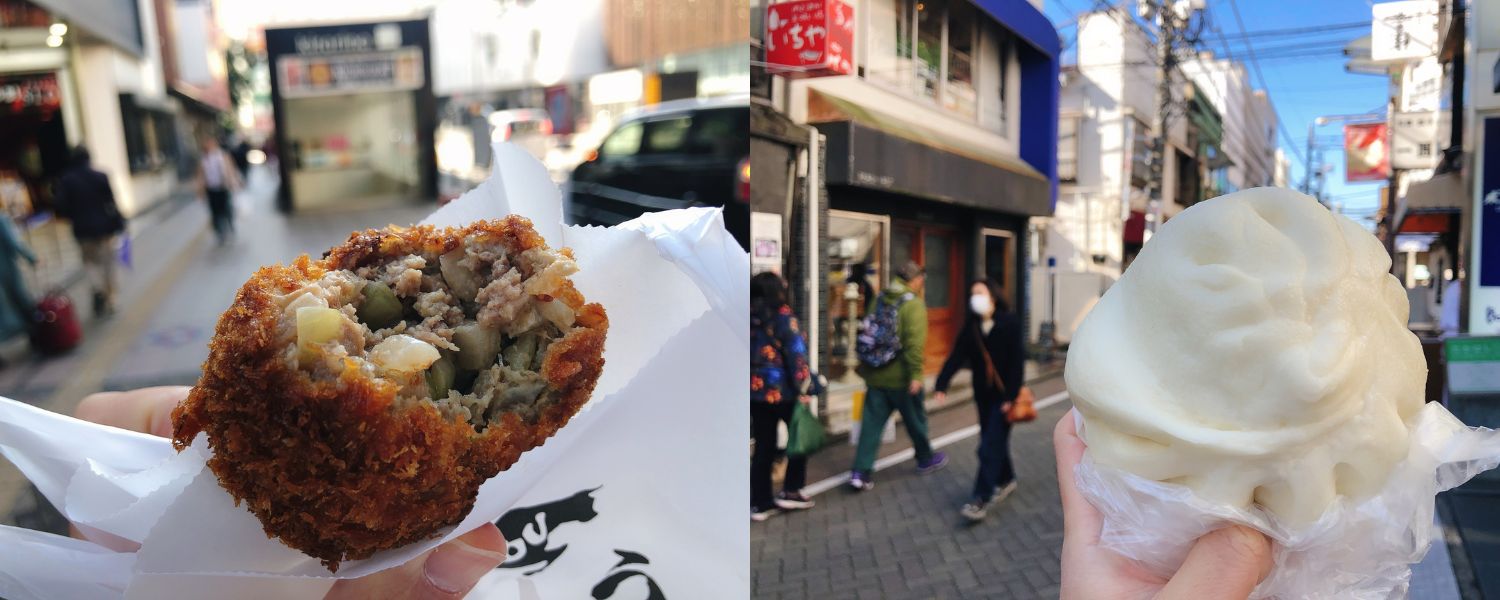
Start by stepping into Sun Road Shopping Street, right in front of the station. This covered arcade is a true local Tokyo experience, filled with all kinds of shops and eateries.
The top recommendation for your food walk is the freshly fried menchi-katsu from the butcher shop Satou. These golden-brown meat patties are packed with juicy minced beef, and the flavor bursting out with every bite is unforgettable. One piece costs 350 yen. If something else on the menu catches your eye, don’t hesitate to try it — everything here is reliably delicious.
After enjoying Sun Road, head a little further along the tracks to Kagozo, a gyoza dumpling shop. It’s the sister store of the beloved Kichijoji restaurant Ichien, which unfortunately closed in 2022. The must-try item here is their nikuman (steamed pork bun). Sinking your teeth into the big, fluffy bun filled with savory pork is pure happiness. Each bun costs 380 yen.
The shopping streets around this area are lined with uniquely Japanese shops, so simply wandering around is part of the fun.
Once you’ve had a few tasty bites, it’s time for an early dinner. Let’s wrap up your local Kichijoji tour by eating, drinking, and soaking in the evening atmosphere.
[5:00–8:00 PM] Early Dinner and Drinks
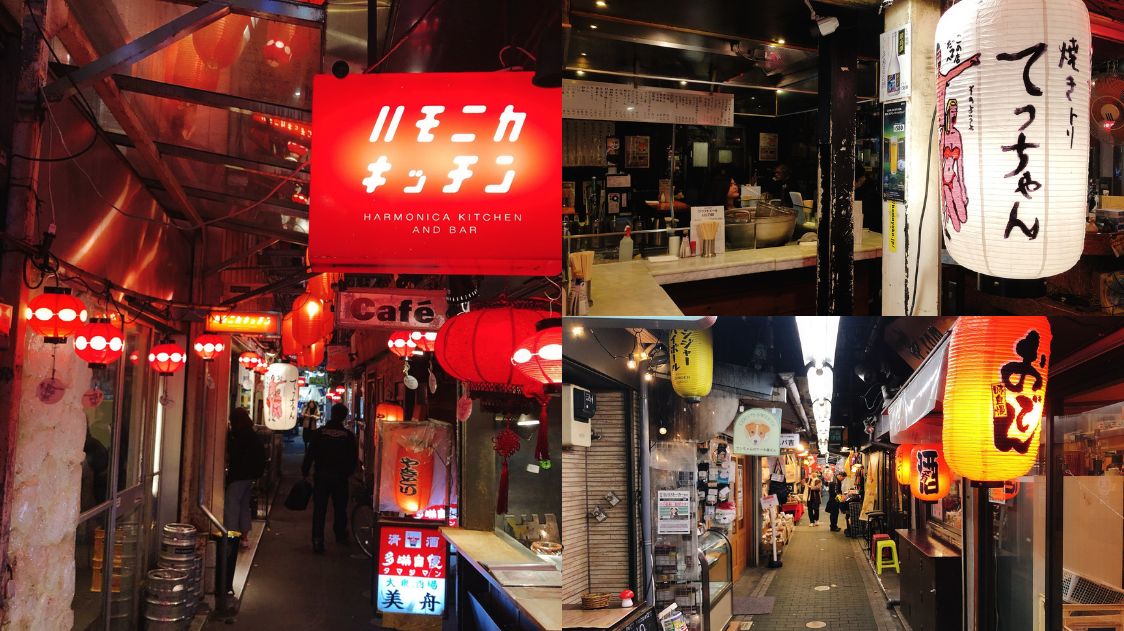
Kichijoji is also famous as a place where you can experience Tokyo’s truly local drinking culture. It breaks the stereotype that “eating out in Tokyo always has to be expensive.”
The dinner and drinking style introduced here may not involve luxury, spacious tables, or perfectly translated English menus. Instead, what you will find is the “real Tokyo.” It may feel unfamiliar at first, but along with affordability and tasty soul food, you will also discover a warmth that defines the local scene.
So where should you go? Without a doubt, head to Harmonica Yokocho. Located just north of the station and only a step away from Sun Road Shopping Street, it feels like another world. Dim alleyways glow with lanterns and red neon lights, lined with tiny eateries and bars packed closely together. The best way to enjoy Harmonica Yokocho is simply to follow your instinct and step into whichever place catches your eye.
That said, here are some food and drink recommendations. At a Japanese izakaya, you can’t go wrong with yakitori (grilled chicken skewers) and oden (a hot pot of simmered ingredients). If you enjoy drinking, try not only beer but also sake, shochu, or a refreshing lemon sour, which pairs beautifully with Japanese dishes.
For yakitori, Mitsuboshi (三つ星) and Tetchan (ヤキトリてっちゃん) are excellent choices, each with a unique atmosphere you won’t find elsewhere. For oden, head to Apron (エプロン). And if you’re curious about a wider range of snacks, look for the bright red sign of Harmonica Kitchen (ハモニカキッチン).
Drinking Tips
– The real fun of Harmonica Yokocho is bar-hopping. In Japanese, this is called hashigo. You can stay in one place if you love the vibe, or enjoy several spots in a shorter time.
– Just like at lunch, it’s best to carry enough cash. Some places do not accept cards or digital payments.
– If there’s no English menu, simply ask the staff for their recommendation. Try saying “Osusume o onegaishimasu” (おすすめをおねがいします), which means “Please bring me your recommendation.”
Just outside Harmonica Yokocho, on the southwest side of Kichijoji Station, you’ll also find Iseya (いせや), a yakitori restaurant that is famous among locals and absolutely worth experiencing. Watching the regulars standing, eating, and drinking gives you the feeling that this is the true essence of Kichijoji.
After that, depending on your satisfaction level and the time you plan to head back to your hotel, your Kichijoji journey comes to an end.
Isn’t it amazing how much variety and depth of Tokyo you can experience in just a single day?
Other Things to Do in Kichijoji
The plan above is my idea of the perfect first-time experience in Kichijoji. However, to help you customize your visit to your own preferences, here are a few more sightseeing options worth considering.
Inokashira Park Zoo: Recommended for Nature Lovers
Located inside Inokashira Park, Inokashira Park Zoo (井の頭自然文化園) is not a huge, extravagant zoo, but it offers a relaxing and soothing atmosphere. You’ll find small, adorable animals like squirrels and guinea pigs.
Although the zoo is not included in the itinerary above, it opens from 9:30 AM, so you can easily drop by whenever it fits your schedule.
 Access Access |
10-min walk from Kichijoji Station |
|---|---|
 Address Address |
1-17-6 Gotenyama, Musashino, Tokyo 180-0005 |
 Business Hours Business Hours |
9:30 AM to 5:00 PM |
 Closed Closed |
Mondays, December 29 to January 1 |
 Price Price |
400 yen |
 Official Website Official Website |
https://www.tokyo-zoo.net/zoo/ino/ |
Kichijoji Petit Village: Recommended for Families and Girls’ Trips
Kichijoji Petit Village (吉祥寺プティット村) is a whimsical, fantasy-like spot that suddenly appears along an ordinary street on the north side of the station. Designed to feel like you’ve wandered into a picture book forest, it features charming cafés, small shops, and boutiques in a setting that feels almost like a tiny theme park.
 Access Access |
5-min walk from Kichijoji Station |
|---|---|
 Address Address |
2−33−2 Kichijoji Honcho, Musashino, Tokyo 180-0004 |
 Business Hours Business Hours |
11:00 AM to 8:00 PM (Weekdays)/10:00 AM to 8:00 PM (Weekends & Holidays) |
 Closed Closed |
Business hours and regular closing days vary depending on each store within the facility. |
 Official Website Official Website |
https://petitmura.com/ |
Musashino Hachimangu Shrine: Recommended for Fans of Quiet Temples and Shrines
Kichijoji is also home to an impressive shrine. Musashino Hachimangu Shrine (武蔵野八幡宮) is located slightly north of the other main spots, offering a more peaceful and serene atmosphere. Still, it is only about an 8-minute walk from the station, making it easy to access.
Beyond the large white torii gate, you’ll find a simple yet striking layout with a red main hall standing quietly at the center. According to the priest, the shrine’s origins can be traced all the way back to the Heian period in the year 789.
 Access Access |
8-min walk from Kichijoji Station |
|---|---|
 Address Address |
1-1-23 Kichijoji Higashicho, Musashino, Tokyo 180-0002 |
For more details and a complete list of things to do in Kichijoji, take a look at this guide:
Your Kichijoji Questions Answered (FAQ)
Is Kichijoji worth visiting?
As this article has shown, Kichijoji is absolutely worth visiting. It is especially recommended for those coming to Tokyo for the second or third time, since it offers a more local and relaxed side of the city. With its balance of nature, shopping, and great food, Kichijoji is one of the best choices you can make. The excellent access from central areas like Shinjuku is another major advantage.
What is Kichijoji best known for?
Kichijoji is best known for the beautiful Inokashira Park, the world-famous Ghibli Museum, its lively covered shopping arcades such as Sun Road, and the nostalgic evening atmosphere of the Harmonica Yokocho alley, perfect for bar-hopping.
How much time do I need for Kichijoji?
If you only want to see the main highlights, half a day is enough. However, to fully enjoy the relaxed atmosphere, it’s best to dedicate a whole day. That way, you can stroll through the park, browse the shops at an easy pace, and stay for dinner without feeling rushed. If you plan to visit the Ghibli Museum, be sure to set aside two to three hours just for that.
Is Kichijoji good for families with kids?
Yes, it’s an excellent choice for families. Inokashira Park has a small zoo, and the swan boats on the pond are always popular with children. Of course, the Ghibli Museum is a world-class attraction that visitors of all ages can enjoy (tickets must be purchased in advance).
Is Kichijoji fun on a rainy day?
Although Kichijoji is known for its abundant nature, there are just as many things to do indoors. The covered shopping arcades are easy and convenient to walk through regardless of the weather. Variety stores, department stores, and clothing shops also make for great all-weather activities. The Ghibli Museum is mostly indoors as well, with only a few outdoor areas such as the rooftop Laputian Robot. Since most of these attractions are located around the station, you can minimize your time outside even on a rainy day.
Have you prepared your pocket WiFi?
Our partner service, Japan Wireless, offers truly unlimited data usage — the perfect companion for your Tokyo trip. Make sure to have one ready, and don’t forget that you can also use a special discount coupon here: JPW001. [Ads] ▶︎ https://www.japan-wireless.com/en
Prefer eSIM instead? We’ve got you covered with eSIM options as well, so you can enjoy an even lighter and more convenient journey. [Ads] ▶︎ https://www.japan-wireless.com/esim
There are other neighborhoods in Tokyo, like Kichijoji, where you can enjoy a deeper side of the city. Be sure to also check out our Tokyo Repeat Visitor Guide, especially designed for those coming to Tokyo for the second or third time.
You may also enjoy the following Tokyo guides written by our writers. Use them to make your trip even more unique.
Written by
Hi! I’m a writer and editor at Japan Web Magazine. Since 2017, I’ve written over 500 articles covering a wide range of Japan-related topics—must-visit travel spots, local food culture, helpful travel tips, seasonal events, anime, manga, and more. I travel all over Japan, from the snowy landscapes of Hokkaido to the tropical beaches of Okinawa. My hobbies, such as hunting for the best ramen shops and keeping up with the latest anime every season, help me share the magic of Japan with people from all over the world. Whether you’re a first-time visitor or a Japan fan planning your dream trip, I want to help you experience the best of what this country has to offer. After traveling to many countries around the world, I still love Japan the most, and I continue to share information while making the most of my perspective as someone who was born and raised here. [Connect with me] ▷You can find more of my writing and follow my latest thoughts on Japan over on Medium. A bit more about me: [Traveler at heart] ▷Most unforgettable trip: Chichijima Island, a remote island that takes over 23 hours to reach by ferry from Tokyo! ▷Favorite neighborhood in Tokyo: Kagurazaka [Foodie life] ▷Obsessed with sushi and ramen ▷Proud foodie moment: Scored a seat at the legendary Sukiyabashi Jiro [Passionate otaku] ▷Favorite anime: March Comes in Like a Lion and Attack on Titan ▷My Best Anime ▷Manga I live by: One Piece and Slam Dunk ▷My Best Manga





